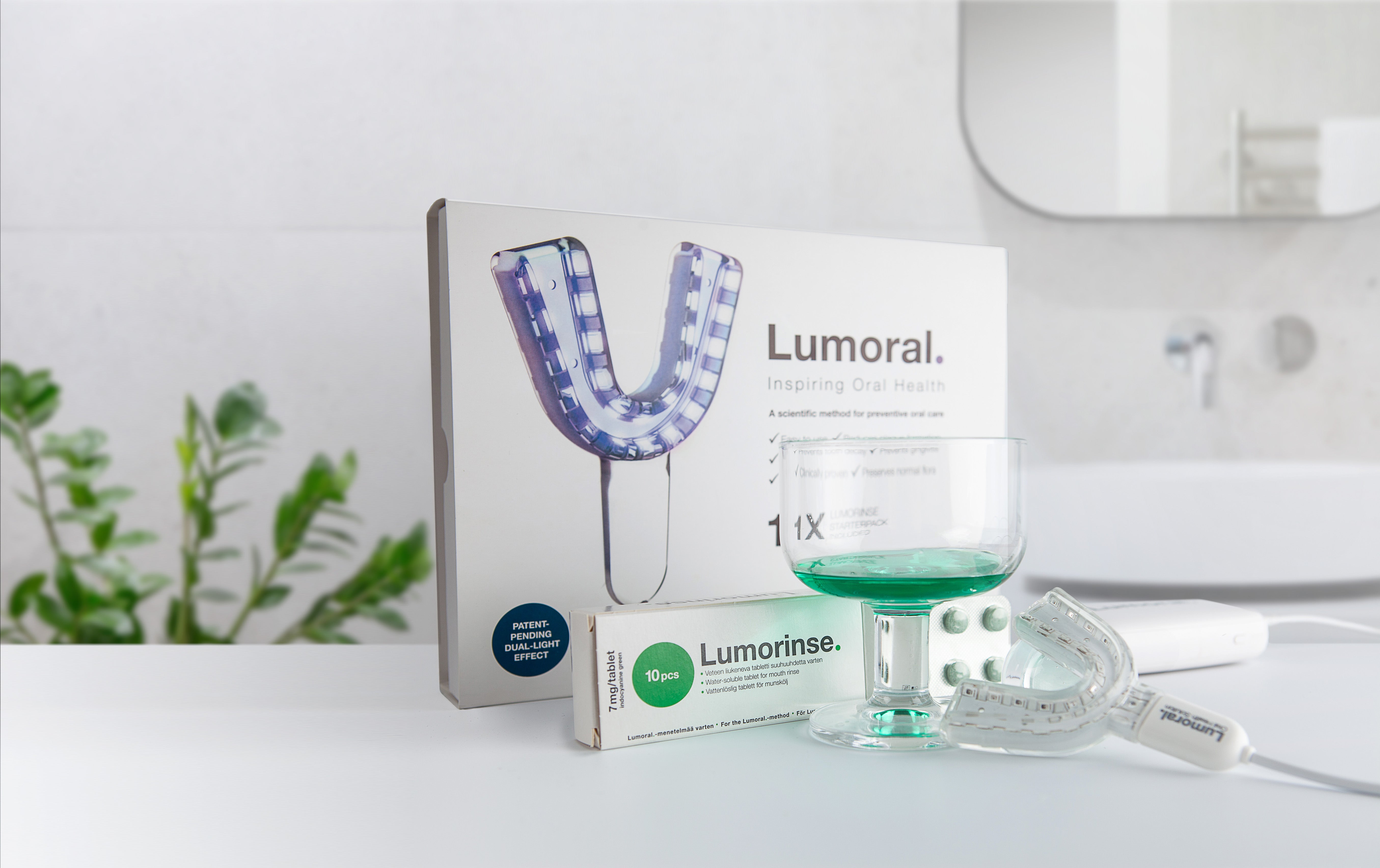Dental and oral bacteria have been linked to numerous chronic diseases throughout the body. Recent research indicates that thorough brushing and regular dental visits can also play a role in preventing strokes (1).
According to statistics from the World Stroke Organization (WSO), over 13 million people globally suffer from strokes each year, with one in four individuals experiencing a stroke in their lifetime. Surprisingly, up to 90% of these cases could be prevented through lifestyle changes such as adopting a healthier diet, increasing regular exercise, quitting smoking, and even improving oral hygiene practices (2).
In his recent doctoral dissertation in forensic medicine at the University of Tampere, Medical Licentiate Olli Patrakka examined the significance of oral bacteria, particularly viridans group streptococci, in stroke development. While these bacteria are normal mouth microbes, they can lead to serious illnesses like heart valve inflammation when entering the bloodstream, such as through inflamed gums during teeth brushing. (3).
Olli Patrakka suggests that these bacteria, attaching to tooth surfaces and initiating plaque formation, may similarly contribute to stroke and atherosclerosis development when entering arterial walls via the bloodstream during dental procedures or infections.
Poor oral hygiene is a risk factor for strokes
According to Patrakka, dental bacteria are present in the blood clots of stroke patients in about four out of five cases, with similar results yet to be reported. Blood clots were collected from stroke patients undergoing acute care in Tampere, Finland, for the study, along with samples from patients with symptomatic carotid artery stenosis used as endarterectomy tissues. (3).
Epidemiological studies have identified poor oral hygiene as an independent risk factor for strokes. Patrakka suggests that the inflammatory reaction induced by dental bacteria in atherosclerotic plaques could explicitly explain this connection.
The dissertation's findings are significant as they present new opportunities for stroke patient treatment development, Patrakka says. He also believes that the development of a vaccine may also be now feasible.
Patrakka stresses that while further research is necessary to establish causality, the study supports the importance of oral health, particularly in individuals at risk of srokes. He emphasizes that considering the inflammation caused by streptococcal bacteria in the mouth is crucial in stroke prevention as part of routine dental care. Moreover, investigating the potential benefits of timely antimicrobial treatment or bacterial vaccines in the future is essential.
Periodontitis is the root cause of many ailments
Studies show dental plaque bacteria are responsible for about 95 per cent of oral diseases. One of the most common oral diseases is periodontitis, a severe gum disease caused by dental plaque. Early signs of this disease include red gums, gum bleeding, and bad breath. (4)
In patients with periodontitis, the fibres that attach the tooth to the gum are destroyed, forming a periodontal pocket between the gum and the tooth. This pocket may expand around the entire tooth. If the infection is not treated promptly and oral hygiene is not improved, it can progress to destroy more extensively the supporting tissues of the teeth and, ultimately, the jawbone. (4)
Thorough oral hygiene is crucial for the prevention and treatment of oral infections. According to the Oral Health Foundation one-in-four (26%) British adults regularly brush their teeth only once a day raising concerns about the number of people willing to skip twice-daily brushing. (5)
The charity is especially worried by the number of people who regularly fail to brush their teeth last thing at night, when the health of the mouth is most likely to deteriorate. Insights from the research show that one-in-four (25%) do not brush their teeth in the evening before they go to bed. (5).
Deficiencies in oral hygiene are directly reflected in the statistics of oral infectious diseases. More than 45% of adults in the UK are currently being affected by gum disease. Meanwhile, 10% are living with the most severe form, which can lead to tooth loss. (6)
Thorough mechanical brushing of teeth and cleaning of the interdental spaces are crucial because even asymptomatic oral inflammations can affect the body's overall health. According to statistics, individuals with healthy mouths even live longer, research shows (7).
– Every missing tooth reduces life expectancy. This is talked about far too little, says Tommi Pätilä, a heart and transplant surgeon at HUS New Children's Hospital in Helsinki, Finland.
Pätilä is also one of the developers of the antibacterial Lumoral method. Lumoral is a medical device designed to improve oral hygiene and oral health. The antibacterial oral care method is especially suitable for patients with difficult-to-treat gum diseases such as periodontitis who do not get adequate results from traditional oral hygiene methods such as brushing teeth and cleaning interdental spaces. (8, 9, 10).
The effectiveness of the novel oral health enhancing device relies on antimicrobial photodynamic therapy (aPDT), also referred to as photoantimicrobial chemotherapy. While this technology is already prevalent in dental clinics, the advent of a home-use device allows for more frequent application of this antibacterial treatment. (11)
aPDT technology itself utilizes light energy and a photosensitizer to generate an antimicrobial effect that eliminates problem-causing plaque bacteria from the mouth. Due to its targeted approach aPDT does not lead to bacterial resistance. (11)
The importance of interdisciplinary collaboration
According to Pätilä, the recent medical dissertation at the University of Tampere holds significance as it integrates oral health into overall body health. Enhancing collaboration between doctors and dentists is crucial and needs improvement across various European countries. While many medical doctors already evaluate their patients' oral health at clinics and refer them for additional treatment when needed, closer collaboration is essential.
Diabetes serves as a prime example of a disease where the importance of underlying inflammations is widely acknowledged. However, heightened collaboration is necessary to accelerate diagnoses and even prevent several common diseases.
Olli Patrakka's interest in oral bacteria stemmed from his responsibilities as a pathologist. Has the interest of young doctors in the impact of dental infections on general health increased?
– It hasn't increased significantly, but it should. In my basic medical training about five years ago, there was minimal discussion of the impact of dental infections on overall health. While the topic is relatively new, it's crucial that awareness and scientific evidence grow over time.
Patrakka underscores the importance of general practitioners recognizing when a dental issue necessitates a referral to a dentist. This could streamline the treatment of oral infections and potentially aid in achieving a balance in treating various general diseases.
– My research contributes to the growing evidence that oral health significantly influences overall health. The blood vessels of the tooth pulp directly connect to the systemic circulation. Therefore, if teeth are in poor condition, bacteria and their byproducts can circulate directly into our bodies.
References:
- Shahi S, Farhoudi M, Dizaj SM, Sharifi S, Sadigh-Eteghad S, Goh KW, Ming LC, Dhaliwal JS, Salatin S. The Link between Stroke Risk and Orodental Status-A Comprehensive Review. J Clin Med. 2022 Oct 2;11(19):5854. doi: 10.3390/jcm11195854. PMID: 36233721; PMCID: PMC9572898.
- Sen S, Giamberardino LD, Moss K, Morelli T, Rosamond WD, Gottesman RF, Beck J, Offenbacher S. Periodontal Disease, Regular Dental Care Use, and Incident Ischemic Stroke. Stroke. 2018 Feb;49(2):355-362. doi: 10.1161/STROKEAHA.117.018990. Epub 2018 Jan 15. PMID: 29335336; PMCID: PMC5780242.
- https://trepo.tuni.fi/bitstream/handle/10024/154588/978-952-03-3315-7.pdf?sequence=2&isAllowed=y
- Saini R, Saini S, Sharma S. Biofilm: A dental microbial infection. J Nat Sci Biol Med. 2011 Jan;2(1):71-5. doi: 10.4103/0976-9668.82317. PMID: 22470238; PMCID: PMC3312703.
- Mehrotra N, Singh S. Periodontitis. [Updated 2023 May 1]. In: StatPearls [Internet]. Treasure Island (FL): StatPearls Publishing; 2024 Jan-. Available from: https://www.ncbi.nlm.nih.gov/books/NBK541126/
- Oral health: What is gum disease? | British Dental Journal, Published 10 March 2017, Issue Date10 March 2017, DOI: https://doi.org/10.1038/sj.bdj.2017.196
- Friedman PK, Lamster IB. Tooth loss as a predictor of shortened longevity: exploring the hypothesis. Periodontol 2000. 2016 Oct;72(1):142-52. doi: 10.1111/prd.12128. PMID: 27501497.
- Pakarinen S, Saarela RKT, Välimaa H, Heikkinen AM, Kankuri E, Noponen M, Alapulli H, Tervahartiala T, Räisänen IT, Sorsa T, et al. Home-Applied Dual-Light Photodynamic Therapy in the Treatment of Stable Chronic Periodontitis (HOPE-CP)—Three-Month Interim Results. Dentistry Journal. 2022; 10(11):206. https://doi.org/10.3390/dj10110206
- Nikinmaa S, Alapulli H, Auvinen P, Vaara M, Rantala J, et al. (2020) Dual-light photodynamic therapy administered daily provides a sustained antibacterial effect on biofilm and prevents Streptococcus mutans adaptation. PLOS ONE 15(5): e0232775. https://doi.org/10.1371/journal.pone.0232775
- Nikinmaa S, Moilanen N, Sorsa T, Rantala J, Alapulli H, Kotiranta A, Auvinen P, Kankuri E, Meurman JH, Pätilä T. Indocyanine Green-Assisted and LED-Light-Activated Antibacterial Photodynamic Therapy Reduces Dental Plaque. Dentistry Journal. 2021; 9(5):52. https://doi.org/10.3390/dj9050052
- Jao Y, Ding SJ, Chen CC. Antimicrobial photodynamic therapy for the treatment of oral infections: A systematic review. J Dent Sci. 2023 Oct;18(4):1453-1466. doi: 10.1016/j.jds.2023.07.002. Epub 2023 Jul 11. PMID: 37799910; PMCID: PMC10548011.



Leave a comment
This site is protected by hCaptcha and the hCaptcha Privacy Policy and Terms of Service apply.